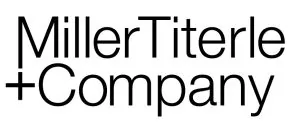Minerals North, a non-profit association that hosts the annual Minerals North Conference, asked us to participate at the 2016 conference in a panel discussion entitled: Working Together and Moving Forward Post Tsilhqot'in. Held in Smithers, British Columbia on May 18 – 20, 2016, the conference included representatives from the provincial and federal governments, First Nations and the mining industry. Minerals North provided a unique opportunity to hear various perspectives on how these groups can work together following Tsilhqot'in.
Our three key takeaways from the conference:
1. Industry is Still Figuring It Out
Nearly two years after the Tsilhqot'in ruling, it was striking how keen the mining industry still is to understand the implications of Tsilhqot'in and move forward in their relationships with First Nations.
Tsilhqot'in undoubtedly created uncertainty for the mining industry. For every question it answered, it raised multiple others that have yet to be addressed. This has resulted in an industry that is still eager to understand exactly how Tsilhqot'in affects it, both now and into the future. Questions such as: "does Aboriginal title include sub-surface rights" demonstrate the depths and potential impacts of this uncertainty.
Despite the mining industry still figuring out the implications of Tsilhqot'in, it is encouraging from a First Nations perspective to see industry approaching these issues with an earnest desire to learn and improve how they work with First Nations.
2. Government is Beginning to Understand First Nations' Role in BC's Future
Despite a slow response to Tsilhqot'in, it appears that the government now understands the implications of it and is taking steps to reflect these implications in its policies.
Although a grand vision of catch all legislation to resolve the uncertainty created by Tsilhqot'in would have perked the ears of many in the room, the government seems to be of the more realistic view that progress will involve ongoing collaboration with First Nations to solve problems one step at a time.
This realistic approach, while not necessarily being the cure all that industry would like to see, should be encouraging for First Nations who are willing to work with the government in a way that is respectful of their Nations' history and contemporary legal rights.
3. First Nations are Beginning to Lead the Way
With industry and government still working to figure out where they stand in BC's future, First Nations are primed to take a leadership role.
First Nations are in the unique position of being able to provide certainty to an otherwise uncertain environment – a role that brings tremendous opportunity. First Nations that are open to working with government and industry will find that these groups are willing – if not eager – to follow their lead.
Chad Day, President of the Tahltan Central Government, exemplified this with a forceful yet conciliatory speech about his Nation's perspective. Day emphasized that the Tahltan Nation is keen to work with industry but that it must be done on Tahltan terms. This is a sentiment that we are seeing repeated throughout BC, and should be welcomed by industry and government.
The fact that two years after Tsilhqot'in the topic of working with First Nations and moving forward from Tsilhqot'in took centre stage at a mining conference is evidence of the power First Nations hold to lead British Columbia in the coming decades.
Thank you!
Thank you to Minerals North and everyone who participated. We look forward to seeing you again next year.
The content of this article is intended to provide a general guide to the subject matter. Specialist advice should be sought about your specific circumstances.

